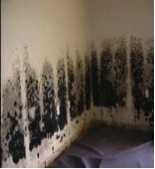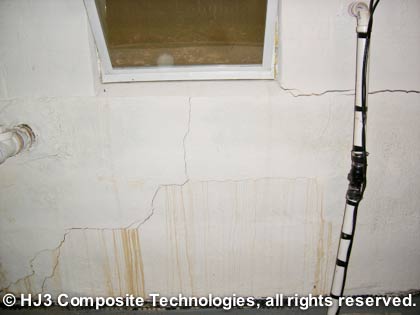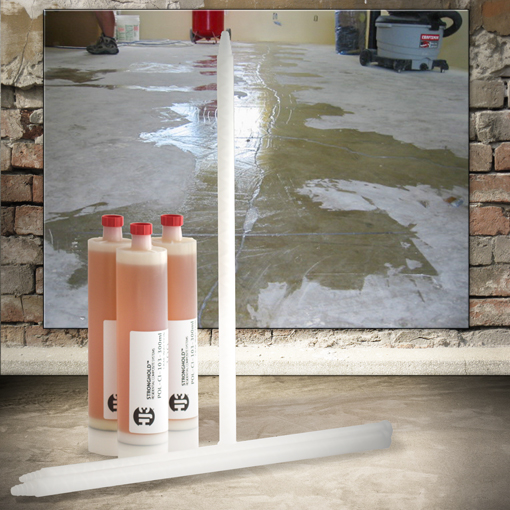Wet walls can be one of your home’s scariest nightmares. Water saturation can disintegrate wallboard and cause wood to swell, rot, and warp. Moisture acts as an unwanted invitation to mold, mildew, and fungus, and if your walls get too saturated with water, they risk total collapse. According to the American Society of Home Inspectors, “most new homes develop basement leaks within 10 to 15 years, and over 60% of basements have moisture seepage, while 38% experience mold and fungus growth due to an elevated moisture level.” Whether your walls are wet because of heavy storms, plumbing leaks, or leaking cracks, it’s important to get them taken care of before they lead to irreparable damage.
But where do you begin? It’s not enough to just dry the walls, because whatever caused them to leak in the first place is likely to do so again. But do you dry your walls and then resolve the root cause, or do you cure the disease and wait for the symptoms to go away?
In considering the gross mold, mildew, and fungus monsters that seem to spread faster than chicken pox, it’s a good idea to get your walls dried out quickly, and then address the root cause. But how? Many people will instinctively turn to heat, and after scouring the Internet for solutions for wet walls, many websites recommend it. But according to the North Carolina State Historic Preservation Office, heat (and A/C!) can dry out your walls too quickly, causing irreparable structural damage, and if you live in a particularly humid area, heat can actually draw more moisture in. Instead of using heat, air conditioning, or some other form of forced air, Senior Restoration Specialist F. Mitchener Wilds recommends natural ventilation and evaporation to dry out your water-logged walls without causing any structural damage.
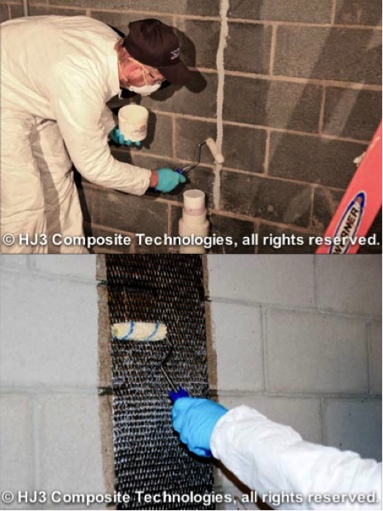
Fill leaking cracks first, and then apply StrongHold’s Crack Repair carbon fiber to permanently seal them.
If there’s standing water in your basement, don’t rush to pump it out. Wilds says that draining the basement while the surrounding ground is saturated may create differential settlement from uneven pressure, which will only damage your foundation and increase the risk of your home’s walls cracking or collapsing. Instead of pumping the water out right away, he suggests marking the water level on the wall, and waiting overnight, which will allow the water outside your home to drain off. Check the water level again the next morning; if the water level has risen, your yard hasn’t sufficiently drained enough, and needs more time. If the water level is stable or has dropped overnight, you can pump two to three feet out of the basement. Wait overnight before pumping out the remaining water.
If your wet walls are due to leaking cracks, you’ll want to fill them and stop the leaking completely before addressing any structural repair methods. StrongHold’s crack repair carbon fiber systems are the perfect solution to permanently repair your cracks, but the fabric won’t stick to your walls if they’re too wet.
What exactly is “too wet”, you ask? You’ll know that your wall is too wet for carbon fiber if a tissue sticks to it. Take a clean tissue and set it against the wall; if the tissue falls to the floor, your wall is ready to be carbon fibered, but if it sticks, you’ll need to dry the wall before you can fix it.
Here’s how to dry a wall:
-
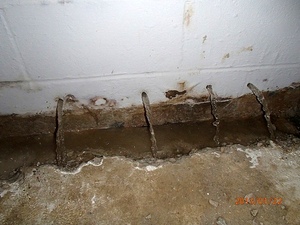
Weep holes are a great way to release water that’s trapped inside your walls. Photo Credit: dryzone.com
Believe it or not, a damp rag will dry a wet wall better than heat. Pat along the leaking crack, and the water molecules on the cloth will cling to the molecules in your wall, effectively drying it. After a few minutes, try the tissue test again; if your tissue now falls to the floor, you’re ready to install your carbon fiber. If it doesn’t, try the next step.
- Drill weep holes into the bottom blocks of your wall. Allow your wall to drain for a few hours, and then re-pat the wall with a damp cloth and re-test the area with a tissue. If your tissue still sticks to the wall, allow it to weep overnight and try again in the morning.
- Use natural ventilation to circulate air through the room. If your basement has windows, open them up. Installing fans in the windows will help circulate fresh air. If you don’t have windows in your basement, just set the fans on the floor or a table to circulate the air.
Once you’ve installed your StrongHold™ crack repair kit, you can finally kick back and relax. StrongHold effectively stops cracks in their tracks, meaning no more wet walls for you or your home. For more information about StrongHold crack repair kits and how to properly install them, write us at STRsupport@hj3.com.

